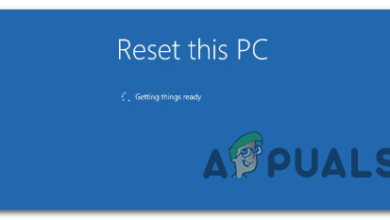Fix: Dual Boot Windows 10 and Windows 11 Not Working
If you’re having difficulties making the dual-boot menu appear on Windows 10 or Windows 11, there are several potential causes why you can expect to deal with this behavior. This article will walk you through all the possible reasons you might deal with this issue and showcase several available fixes that should allow you to correct this behavior.

After investigating this particular issue thoroughly, it turns out that there are several common scenarios that might spawn this error. Here’s a list of culprits that you should troubleshoot when attempting to fix this issue on Windows 11 or Windows 10:
- The boot menu is not activated – The situation when the multi-boot option is truly deactivated is the most frequent reason you can anticipate dealing with this issue. Use an elevated CMD Prompt to verify if the boot menu is enabled if you are confident that the dual boot environment was set up successfully.
- Fast Startup forces the default OS – Windows will lock the installation drive if Fast Startup is chosen. As a direct result of this, Windows may not be able to recognize the operating system on a dual-boot PC. Disable the rapid action functionality if you think the fast startup feature is really what’s causing this behavior.
- The startup and Recovery menu is incorrectly configured – Another circumstance where you could expect to experience this issue is one in which the dual boot menu is presented for a short period of time for you actually to see it. You may resolve this issue by changing the boot sequence using the advanced system settings or utilizing third-party software if you only see the menu for a little moment before the default option takes over.
- Corrupted system files – If you’ve reached this point and are still without a workable fix, you should look into the likelihood that system file corruption has harmed your dual boot arrangement. Applying successive DISM and SFC scans will do this.
Now that we have gone over every potential reason why the dual boot menu doesn’t appear when you boot up your PC (after successfully setting up dual booting on your PC) follow the methods below to troubleshoot the issue.
Note: All the potential fixes below assume that you already have configured a dual boot environment (Windows 10 and 11). If you’re looking for specific instructions on how to do this, follow these steps.
1. Enable the Boot menu via CMD
The most common cause of why you might expect to deal with this issue is a scenario where the multi-boot menu is disabled. If you are sure that the dual boot environment was set up correctly, you should first use an elevated CMD Prompt to check if the boot menu is enabled.
Note: If the dual boot menu is disabled, the boot sequence will automatically boot from the default OS instead of allowing you to select from the available boot options.
If you’re not sure whether the boot menu is enabled on your Windows environment, follow the instructions below for specific instructions on how to enable it:
- Press the Windows key + R to open up a Run dialog box.
- Next, type ‘cmd’ inside the Run dialog box and press Ctrl + Shift + Enter to open up an elevated CMD prompt.
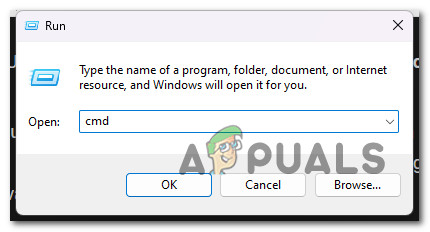
Open a CMD window - Click Yes to grant admin access at the User Account Control (UAC).
- Once you’re finally inside the elevated CMD prompt, type or paste the following command to make sure the boot menu is displayed:
bcdedit /set {bootmgr} displaybootmenu yesNote: If you see the ‘operation completed successfully’ message, the boot menu was deactivated, and you’ve just enabled it.
- Restart your PC and see if the dual boot menu appears at the next computer startup.
If this method didn’t work for you or the dual boot menu was already activated in your case, move down to the following method below.
2. Re-configure the Startup & Recovery menu
Another reason why you might expect to see this problem is a scenario where the timeframe in which the dual boot menu is displayed is too small for you to see it. If you briefly see the menu but don’t have time to select anything before the default option kicks in, this method will help you change this behavior.
The Advanced System Settings pane in Windows 10 and Windows 11 gives you the option to pick the operating system that will launch automatically when the computer starts up. It can display a list of operating systems and recovery alternatives during a restart.
By configuring these settings, you may be able to restore a dual boot option that has been removed from Windows 10 or 11.
Note: This method involves accessing the Advanced system settings menu (under the About tab) and modifying the Time to display list of operating systems to 30 seconds or more.
- For Settings to open, press Win + I.
- Then select System from the left-hand menu, and click the About tab.
- Click on Advanced system settings in the Related settings section by scrolling down.
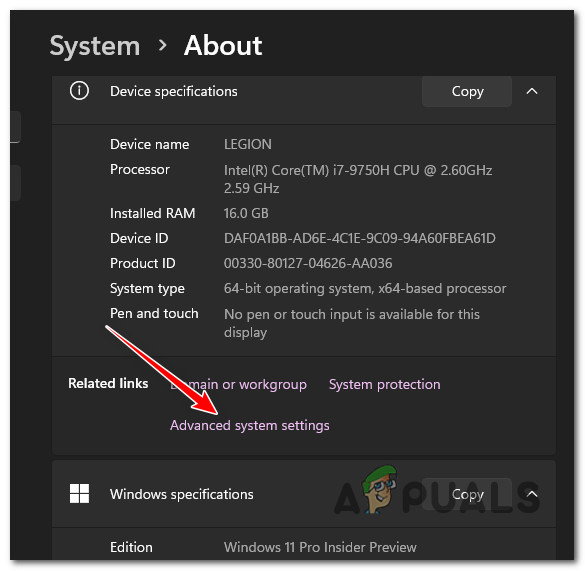
Accessing the Advanced System settings menu Note: On earlier Windows 10 machines, select Advanced system settings from the left pane by going to Control Panel > System and Security.
- First, select the Advanced tab, then find the Startup and Recovery section and click the Settings button in the resulting System Properties window.

Accessing the Startup recovery menu - Select your favorite OS by clicking the drop-down arrow next to “Default operating system” in the Startup and Recovery box.
- Then select 30 seconds under the Time to display list of operating systems option. If this setting is used, your computer will display the boot menu for 30 seconds.
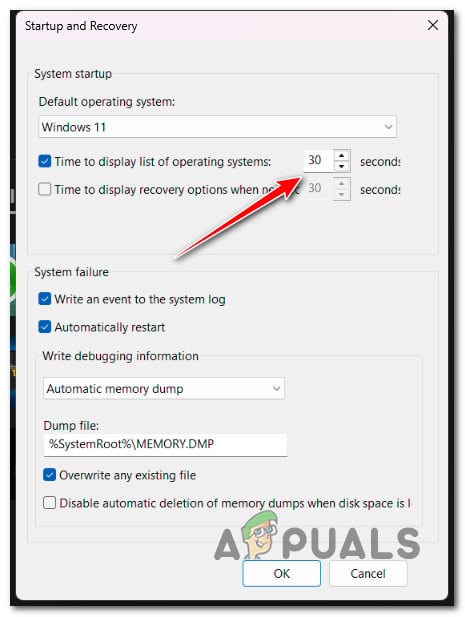
Modify the system startup settings Note: The operating system you chose as the default will load once this period of time has passed.
- To save the changes, click OK, reboot your PC, and see if the dual boot menu appears.
If you still aren’t given the option to select between your available operating systems, move down to the following method below.
3. Re-Configure the Boot Manager (using EASYBCD)
The bcdedit command featured in the first method does not always function correctly. Either it is unable to launch the boot menu, or it continues to be inoperable even after displaying the notification that it was successful.
When faced with a scenario such as this, you can use a third-party tool known as EasyBCD to create a boot entry.
Note: EasyBCD is a simple tool that runs on the Windows platform and is available for free in personal and non-business settings.
If you don’t mind using a 3rd party tool, follow the instructions below to reconfigure the boot manager using EasyBCD:
- First, open your default browser, visit the official EASYBCD download page and click on See More.
Note: There are commercial and non-commercial versions of EasyBCD. Click Register to download the free version to get the tool, then provide your login and email address. - Launch the installer, then watch as the program installs itself on your computer.
- Open EasyBCD, then choose the Edit Boot Menu option.
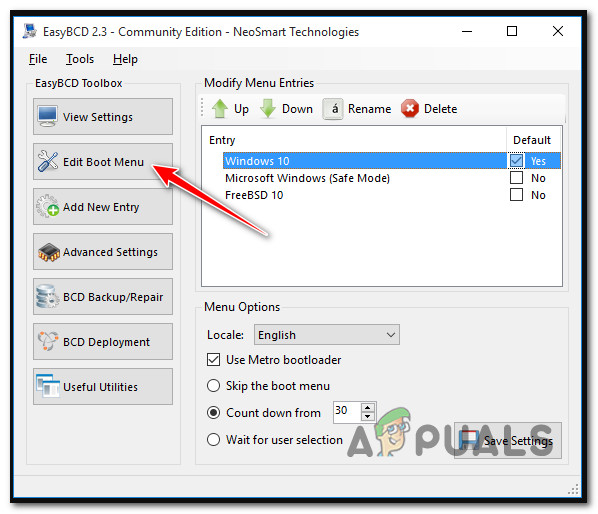
Edit Boot Menu - A dual boot entry will, by default, be included here. To change the default OS, check the box next to the entry you wish to make default in the Default column.
- Check the Use Metro bootloader box under Menu Options.
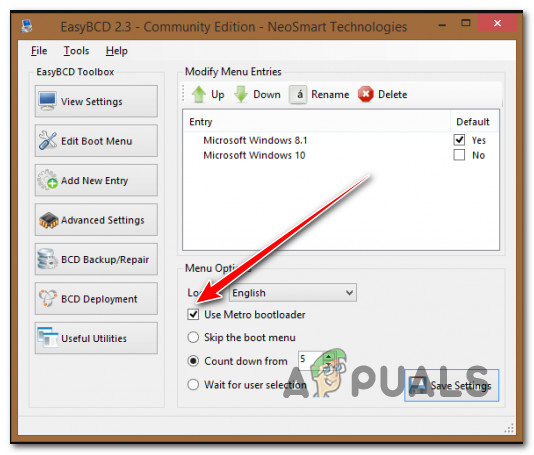
Use Metro Bootloader - Set the timer to 30 seconds and choose Count down from.
- You will get the Bootloader settings saved notification successfully after clicking Save Settings.
- Once you have successfully modified the BCD process, reboot your PC and see if you can now access the dual boot menu.
4. Disable Windows Fast Startup
The Windows 10 feature known as “Fast Startup” makes it possible for you to start your computer once it has been shut down quickly. When turned on, it will store your operating system in a hibernation file, making booting up much quicker. It is a valuable function on older computers, especially if your system takes all the time in the world to restart, which is one of the situations in which this feature comes in handy.
However, it has certain downsides as well. Windows will lock the installation disk if the Fast Startup option is selected. Consequently, Windows cannot identify the operating system on a computer set up to dual-boot.
If you suspect that the fast startup functionality is causing this behavior, follow the instructions below to disable it:
Note: This method is confirmed to be effective on both Windows 10 and Windows 11.
- To enter the Run dialog box and the Power Options menu, press the Windows key + R.
- After that, enter “powercfg.cpl” into the Run menu.
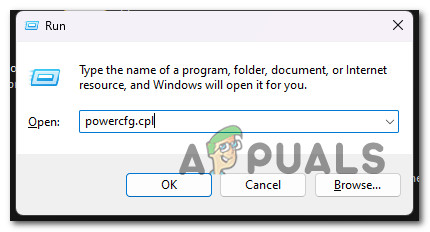
Open the Power Options menu - Select Choose what the power buttons do from the left-side menu in the Power Options window.
- Select Change settings that are not accessible right now from the System Settings menu.
- After that, click Save changes after unchecking the option next to Turn on quick startup (recommended) (at the bottom of this window).
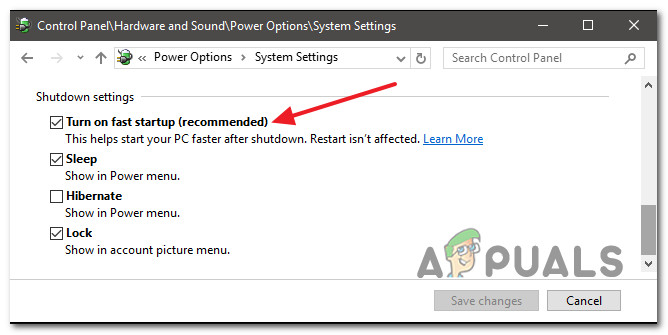
Turn on Fast Startup - Restart your computer, and see if the dual boot menu appears on the initial screen.
If the same problem still occurs, move to the following method below.
5. Use the System Configuration tool
If customizing the Startup and Recovery option does not produce the desired results, you may use the System Configuration tool to modify the boot menu. You can control and choose your preferred operating system (OS) in a dual boot configuration and set a timeout for the boot menu.
To configure the boot menu with the use of the tool for system configuration, follow these steps:
- Start by opening a Run dialog box. You can do this by pressing the Win key + R.
- To launch the System Configuration tool, enter msconfig and hit OK.

Open the System Configuration menu - Once you’re inside, open the Boot tab. It will display all the installed operating systems on your PC (if you have a dual boot configuration).
- Click the Set as default button after choosing the OS that isn’t already the default.
- Next, enter 30 or 60 in the Timeout column.
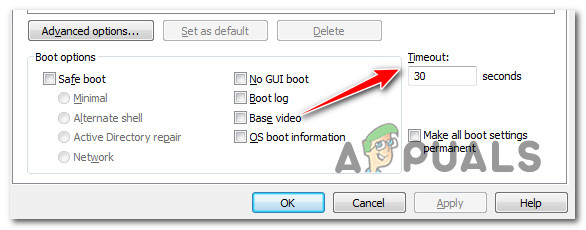
Timeout Column msconfig Note: These settings are expressed in seconds, so if you set it to 30, the boot manager will hold off loading the default OS for 30 seconds.
- To save the changes, click OK and Apply. Pick Restart if a request to restart displays.
- The dual boot option will appear as soon as your computer restarts.
- To load the operating system, enter after selecting the OS with the arrow keys.
6. Deploy DISM & SFC scans
If you’ve come to this stage and still haven’t found a practical solution, you should investigate the possibility that your dual boot configuration has been negatively impacted by system file corruption.
Unless you want to go the third-party route, it would be prudent to use a few built-in tools (SFC and DISM).
Note: These two built-in tools can be used to resolve system file corruption that may prevent your OS from addressing dependencies used by Windows Update.
The most common sorts of corruption that might cause this kind of issue can be fixed by the two built-in tools, System File Checker and Deployment Image Servicing and Management.
The best place to begin is with a System File Checker scan because it can be done without an ongoing internet connection.

Note: System File Checker uses a locally stored cache to swap broken system file components with functional ones. To avoid making any further logical errors, this process shouldn’t be halted until it’s finished.
If you’re using an outdated HDD rather than a more modern SSD, this process might take up to an hour or more, depending on your read and write speeds.
Important: Do not close the window before the real-time tracking has resumed if the System File Checker scan in your case, temporarily stalls while running.
Once the SFC scan is complete, restart your computer to see whether the voice mixer issue has been fixed.
If the problem is still there, run a DISM scan.

Before starting this process, take note: Since DISM uses a portion of Windows Update to replace corrupted files with equivalents free of corruption, make sure your Internet connection is steady.
After doing the SFC and DISM checks, restart your computer to see whether the dual boot issues have been resolved.





